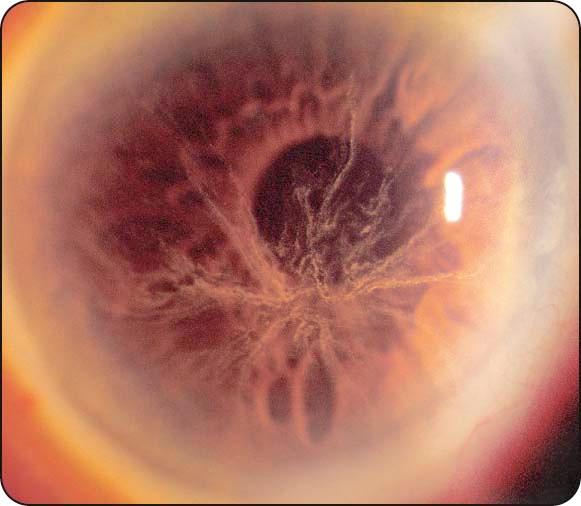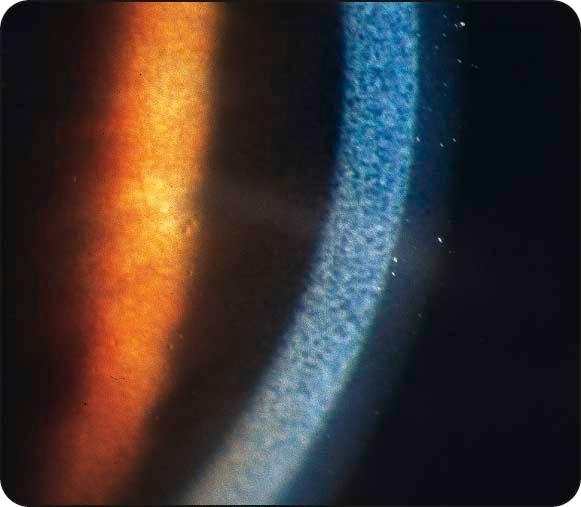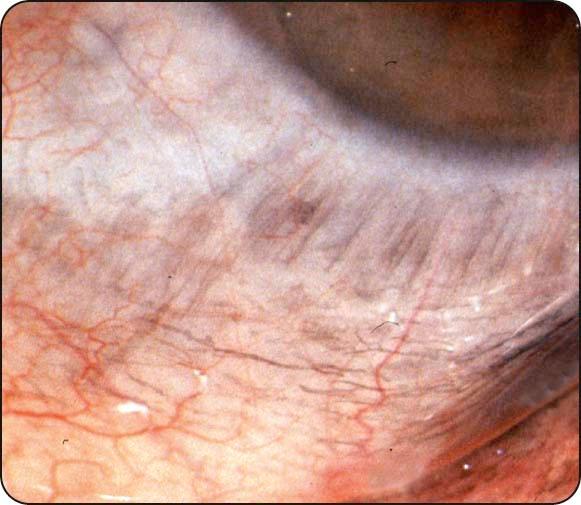Physical Address
304 North Cardinal St.
Dorchester Center, MA 02124
Signs: (a) fine greyish or golden-brown opacities in the inferior corneal epithelium, (b) progressing to a whorl-like pattern that originates from a point below the pupil and swirls outwards, sparing the limbus ( Fig. 20.1 ); usually reversible on cessation of medication. Vision is not impaired, but some patients may experience haloes.

Causes: quinolone antimalarials (chloroquine, hydroxychloroquine) and amiodarone.
Long-term therapy may cause subtle and visually innocuous yellowish-brown granular deposits in the endothelium, Descemet's membrane, and deep stroma.
Keratopathy in argyrosis (silver deposition) is characterized by greyish-brown granular deposits in Descemet's membrane ( Fig. 20.2 ); conjunctival involvement may also occur ( Fig. 20.3 ).


Chrysiasis describes the deposition of gold in tissues after prolonged administration (chrysotherapy), usually in the treatment of rheumatoid arthritis. Keratopathy is characterized by asymptomatic dust-like or glittering purple granules scattered throughout the epithelium and stroma.
Soon after commencement of therapy, some patients develop reversible diffuse white punctate opacities sometimes associated with epithelial oedema.
Become a Clinical Tree membership for Full access and enjoy Unlimited articles
If you are a member. Log in here